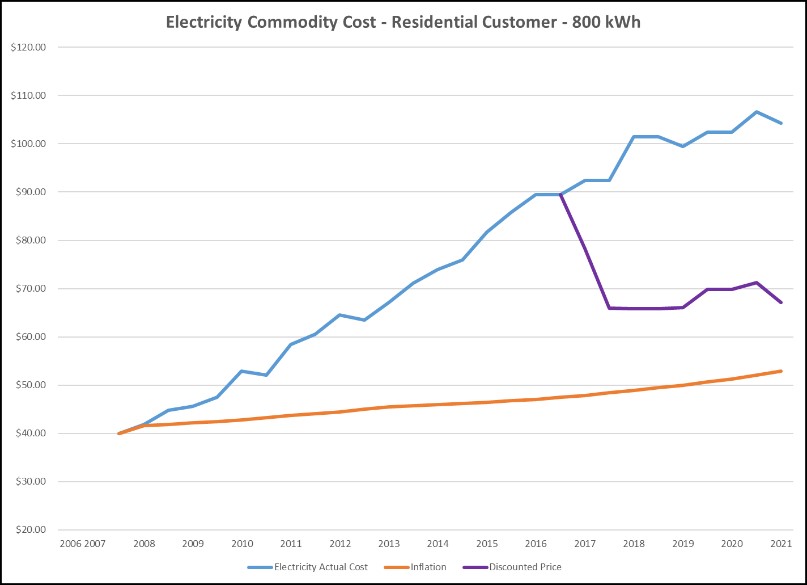Electricity rates are not in the news to the extent they were a few years ago. To see why, consider this chart. The bottom orange line is inflation as per the Bank of Canada. The blue line is the actual cost of electricity (just the commodity and not including transmission or delivery) in Ontario for an 800 kWh per month customer. As can be seen it has been rising significantly above the rate of inflation and went from $40 in 2007 to around $105 in 2022; an increase of 163% as compared to inflation of 32%. Until 2016, the electricity rates, whether time-of-use for residential and small business customers or the hourly rate plus global adjustment for larger customers, very closely tracked the actual cost. The outrage at the high electricity costs reflected these increases.

In 2016, electricity rates were substantially reduced and they have remained low ever since. This can be seen in the purple line.
However, the high costs of producing electricity in Ontario have not gone away. They are just not reflected in rates. Instead, they are being paid with tax dollars. For the 2021-2022 fiscal year, the Government of Ontario has estimated the cost of this subsidy to be $6.494 billion dollars. That number does not include the additional rebates that have been provided for pandemic relief like the recent flat charge of 8.2¢ for every kWh.
Electricity is subsidized in two ways.
- First, the Government of Ontario has decreed that all the excess costs of renewable energy contracts, largely from the Green Energy Act, will be funded directly by the province starting in 2021 and not part of the Global Adjustment. This is estimated at $3.1 billion for the current one-year period. The Board of NOTL Hydro recommended this action in 2016-2017. The overpriced contracts were a political decision so it is appropriate that the costs be borne by taxpayers and not ratepayers. This subsidy reduces the cost of electricity for all customers and makes Ontario more competitive.
- Second, the cost of electricity is reduced by 17% on residential and small business bills as the Ontario Energy Rebate (OER). Whether this is a good idea or not will be a matter of personal opinion. It is not available for larger customers so does not make Ontario more competitive. However, electricity costs are regressive in the sense they are a bigger portion of lower income budgets while provincial income taxes tend to be progressive.
There is no easy fix. Hopefully, the cost of generation will be managed well going forward to keep further increases low. As the overpriced renewable energy contracts expire, they can be replaced with contracts more appropriate for ratepayers. Getting these costs in line with expectations and reducing the subsidy will be a long, detailed slog.